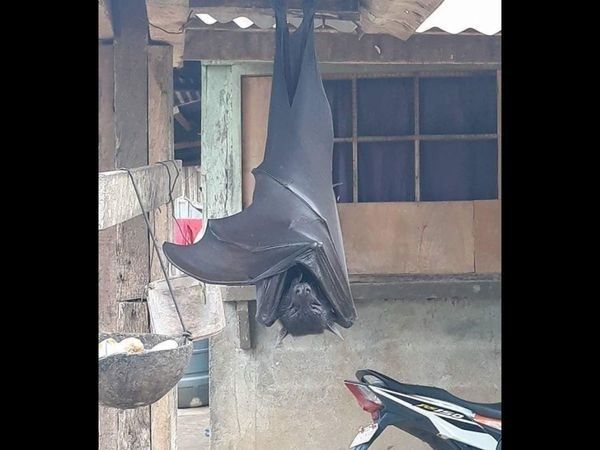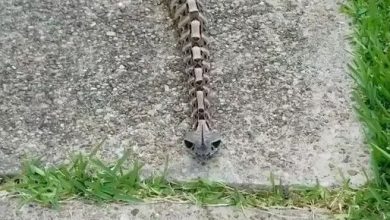
Some bats are small, some that are large, and some that are disturbingly giant.
At least that’s the impression you would get from looking at a photo of an enormous bat taking a daytime snooze.
The gigantic bat was snapped roosting in the outbuildings of someone’s home, wrapping its wings around itself and closing its eyes.
Looking at the picture, you could be forgiven for immediately assuming that this was a fake, surely bats don’t get that big?
But in fact, the picture has not actually been subject to any editing whatsoever after it was snapped.

The species in the picture is a golden-crowned flying fox, one of the largest species of bats in the world.
It can have a wingspan of as much as five-and-a-half feet wide, so pretty huge.
However, describing it as ‘human-sized’ is a bit of exaggeration as the bat’s body is typically around one foot tall.
So how does this picture manage to make it look so big?
It was shared on Twitter by user @AlexJoestar622 who said: “Remember when I told y’all about the Philippines having human-sized bats? Yeah, this was what I was talking about.”
Some users have speculated the bat’s imposing appearance is down to a photographic trick known as forced perspective, which can make objects appear larger than they are, others have suggested it’s been altered.
One skeptic notes: “The light source is a small square hole in the roof but on the left side of [the] wood, it’s well illuminated.”

And for those who worry about the bat, it is vegetarian, mainly feeding on fruits it can find in the Philippines.
The species is particularly partial to figs, which are plentiful in the forests it inhabits.
Sadly, the giant golden crowned flying fox is classed as an endangered species.
This is due to a mixture of individuals being poached, as well as the destruction of their forest habitat.
Source: unilad; igvofficial







